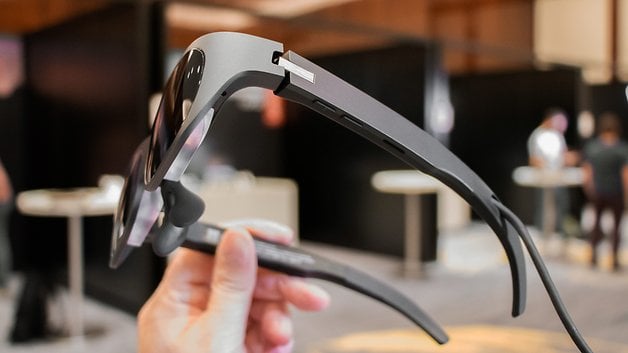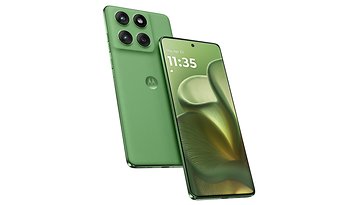Lenovo Glasses T1 hands-on: The future of the home office?


Read in other languages:
Already, the first few days of the Berlin technology fair, IFA 2022, I discovered that I needed a device I never imagined existed. As a fan of science fiction, the movie Minority Report permeated my thoughts about the future of our interaction with content and multitasking, and after a long time Lenovo has brought this breath of innovation back to my attention again. Are T1 Glasses the answer for the future?
Aiming to provide an alternative to a secondary monitor in the home office for those who don't have a lot of space, or to ensure privacy for those who work in cafés, trains, or planes frequently, Lenovo announced Glasses T1.
The idea here is very simple: access to a private display from the lenses of these glasses that are compatible with Android and iOS smartphones and tablets, as well as Windows and macOS laptops via the USB-C port. With Full HD image quality and Micro OLED display technology, the manufacturer believed it has found one of the most functional ways to use smart glasses.
Neither falling under the Virtual Reality (VR) or Augmented Reality (AR) brackets, this device wants to act as a secondary screen that is connected to your notebook, but also offers options for streaming video and gaming when used in conjunction with your smartphone. Unfortunately, during the launch event it was not possible to test it with a computer, but only with a Motorola Android phone.
The Glasses T1 is still a work in progress...
When used in conjunction with a smartphone, for example, the smartphone's screen acts as a trackpad to select options like watching a YouTube video or playing Doodle Jump—which isn't easy at first. The cool thing here is that the screen either follows your head movements or lets you park it somewhere in visual space, so you can still interact with real life.
On the Glasses T1, we have physical buttons for positioning the virtual screen, as well as volume buttons. Now, when it comes to design, this device still seems to be in the prototype stage, and is a bit clunky. But I really believe that the idea of a display accessible from the lenses of a pair of glasses is genius! And I have two big factors for thinking so: space saving and privacy. Which, let's face it, is excellent for the Home Office!

Lenovo Glasses T1: Price and availability
According to Lenovo, the T1 Glasses will be available from early 2023 onward in select markets. And the suggested price should be below $500. This is undoubtedly a project work in progress, and it needs some variants on the market to start looking good. However, the idea caught my eye more than a pair of VR glasses right now, as it seems to deal with more tangible issues in my opinion.
One thing is for sure, if like me, you consider yourself an early adopter of new (and often questionable) technologies, then you may be blown away by Lenovo's T1 Glasses, but that doesn't necessarily mean that this device is any good. It seems to me that the idea behind it may be bigger than itself. Very soon, as IFA is just the beginning, it may be the case where more companies bet on this same concept and may have an even better execution, just like the Magic Leap project—the famous "different but similar."
But now I am really curious to understand if you would use this kind of device? Among my colleagues I can assure you that not everyone was as enthusiastic as I was!


























